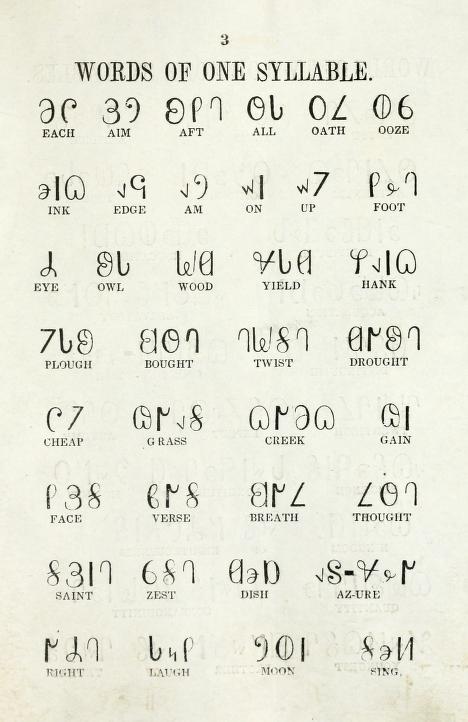I just finished reading a biography about George D. Watt, who was a Pitman scribe to the Mormon prophet, Brigham Young, for 30 years during the mid 1800's. The biography is available in print as well as in .pdf format for free on the University of Utah website here. It was fascinating-- how often do you get to read such a well-rounded biography about a shorthand scribe, warts and all? (By the way, this was written by one of Watt's descendants.) Watt was employed by Young to capture the early sermons of the church, which were later published in a 26-volume work called The Journal of Discourses-- no small feat for a scribe!
Apart from teaching Young and others Pitman shorthand, Watt also served on the Board of Regents under Young to undertake the formation of a new alphabet to simplify English (this is where shorthand blurs into orthography). Their new creation was called the Deseret Alphabet. The alphabet went through several revisions (a couple of the early ones were based on Pitman characters), but the final one was mostly Watt's creation. Part of his philosophy was summed up as:
"As
all organized things, from a grain of sand to a world, is composed of a
congregation of isolated atoms, so language is composed of an
assemblage of simple, pure sounds. It has therefore occurred to me, very
forcably, that an alphabet should contain just as many letters as there
are simple-pure atoms of sound."
Young had a vision of a clear and unambiguous language emerging in the end times to more perfectly communicate the gospel with, and he hoped to facilitate that with the Deseret Alphabet. (I believe both Pitman and Gregg had similar visionary ideas about a simplified mode of communication that could take over the world.) Some school primers were produced in Deseret Alphabet, and a Utah newspaper published articles (including translations of the Bible) into Deseret. They felt the Deseret Alphabet could be used for any language (much like Gregg, eh?); some missionaries even went to the Hopi people and attempted to transcribe their language using the Deseret characters (for a 53-minute interview about that, click here.) But after the death of Young, its use more or less fizzled out, especially when they had difficulty obtaining fonts to print the new alphabet with. Only a speller, 2 primer books and the Book of Mormon were published at the time. Later leaders just weren't that interested in it and it is now a historical curiosity. (However, it appears a few have endeavored to keep it alive. Type "Deseret Alphabet" into Amazon's search, and you will see some classics like Dracula, Alice in Wonderland, etc. written in it from modern times.) There was never any mention of the speed potential of Deseret.
Internet Archive has several of the original Deseret Alphabet books scanned in, if you want to take a look.
On the whole, Watt's life was intriguing to read about. Besides shorthand and reporting, he was into sericulture, weaving, gardening and music. He went from poverty to prosperity and back to poverty again. He went from being the first Mormon convert in England and part of the Mormon migration to the Utah territory, to being excommunicated by the end of his life-- in part after a dispute with Young (he was also dabbling in spiritualism by that time). He was a polygamist and had a front-row seat to Utah history in the mid 1800's. All in all, worth a read.



From the first primer:

Labels: anythinggoes, deseret alphabet, george d. watt, orthography, pitman



